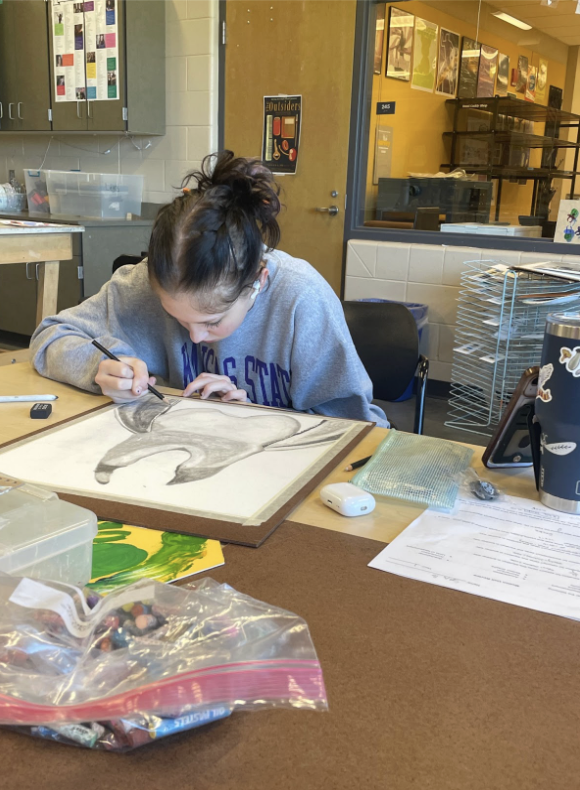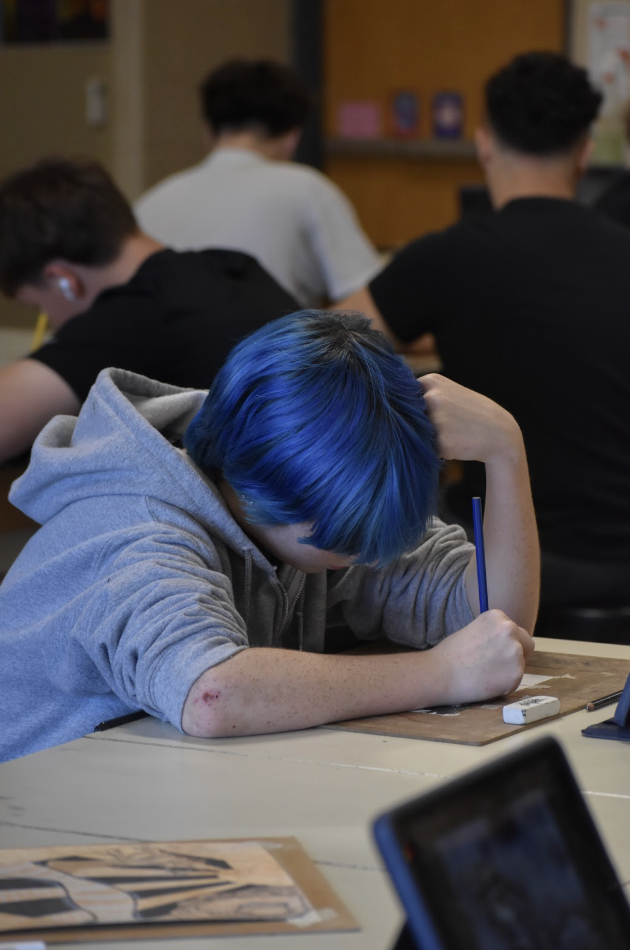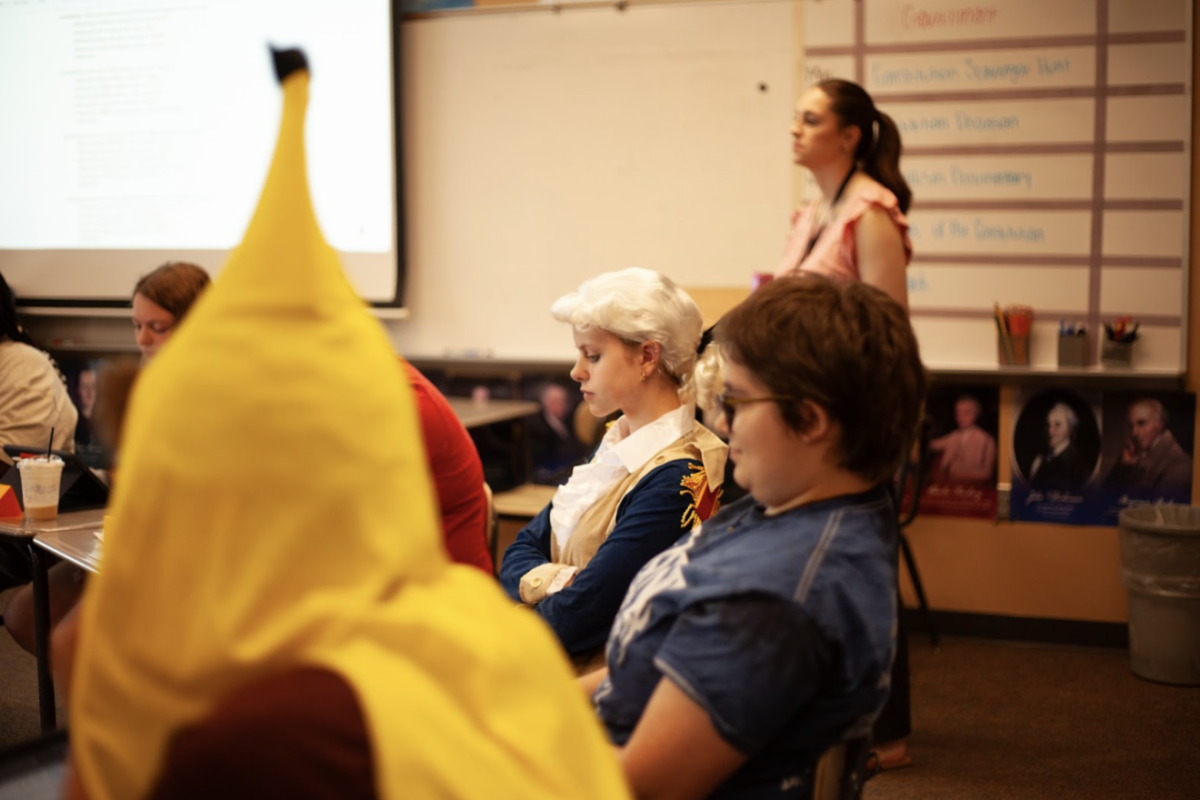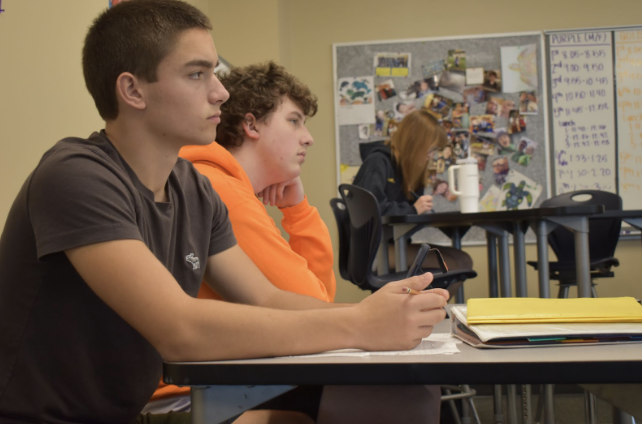After a year of trial and error, Catherine Hapke, art teacher, has begun to feel comfortable with the graphic design curriculum they worked to create. They focused on shifting students from technicality to creativity, in turn learning and appreciating graphic design more in the process.
“It was only last year when [Brad] Reinking, [former graphic design teacher], had retired. They wanted to revamp the program for CTE and asked if I wanted to rewrite the curriculum. I didn’t have a lot of experience in graphic design, but I did take a lot of creative thinking classes in college. So, I felt like it would be neat to connect those to turn the class into less of a tutorial based class and instead focus on building processes in creative solution and problem solving,” Hapke said.
Even though Hapke did not have any professional experience with graphic design, they were able to grow in their appreciation for the art along with students.
“I’ve never done graphic design for other people; I think it’s more about having an eye for it when I’m out observing poster designs… Taking all of the things that make graphic design truly an art form and bringing that into a graphic design art class.”
Molding the old curriculum to more fit modern needs has been a challenge that Hapke has happily taken on. Not only have they grown in their own artistic ability, but they are allowing students to do the same.
“I really enjoy the creative thinking aspect of art…I’ve always liked succinct color shapes and through that simplicity, I think [my art style] blends really well with graphic design. I’m usually taking something that is complex and finding a way to make it more succinct, understandable, or create the essence for my audience… I think it’s important to not treat some of the things we create as precious. So, being able to teach kids those processes that they can use, not only in art but in any job they have, is really important. They are able to see the value in art,” Hapke said.













![Peering through their microscopes, [Brock] Laplante’s freshman Biology class has a hard time pretending they’re not interested. From sharp angles to swirling cells, there’s no predicting what could be seen.](https://stampedenews.net/wp-content/uploads/2025/10/Screenshot-2025-10-03-at-10.56.07-AM.png)
